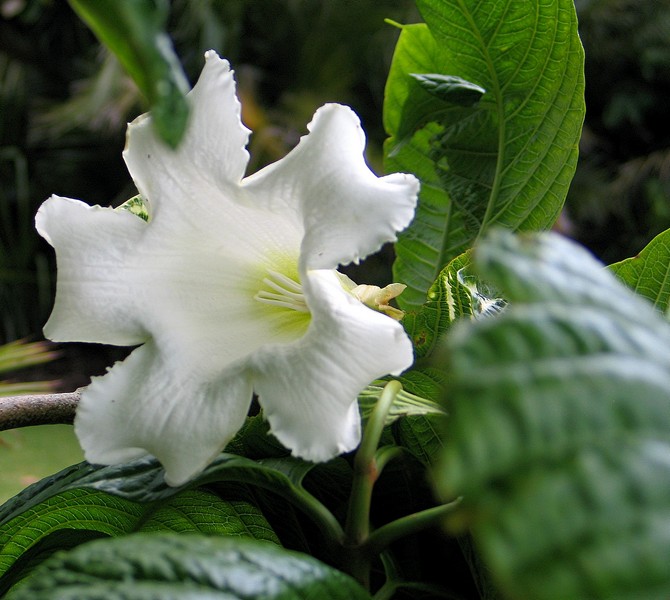The synchronicity of the world sometimes surprises me. I had first noticed this vine at Gardens by the Bay in Singapore but couldn’t find a name for it. Last weekend I was visiting the Plummer’s Point (near Tauranga) garden of a friend who loves unusual plants – and not only was it there, but it was named! Well done, that man.
Beaumontia grandiflora is a vigorous, woody vine, sometimes known as the Nepal trumpet flower, Easter lily vine or herald’s trumpet. Apparently the young twigs can be used to make fibre and the young branches for a coarser rope. The seed-pod hairs, meanwhile, are said to be not only the most lustrous and most purely white of all the so-called ‘vegetable silks’, but also possess a remarkable degree of strength.

And the plant’s roots and leaves can be used in the treatment of fractures and other injuries, while also relieving backache and leg pain caused by rheumatism.
The fragrant white flowers are borne from early spring right through summer and the plant is apparently hardy down to -2C, although may be semi-deciduous in cold years. In the wild, Beaumontia climbs impressively through trees and over rocks and shrubs. Native from India to Vietnam, it grows in the eastern foothills of the Himalayas at altitudes from 150m to 1400m.
Wikipedia tells me that the genus was named for Mrs Diana Beaumont (1765-1831) of Bretton Hall, Yorkshire who was described in the Curtis Botanical Magazine Volume 7 (1833) as “an ardent lover and munificent patroness of Horticulture” (her gardener was one of the few with anything decent to say about her, click on the link to read about her life). It was described by Dr Nathaniel Wallich (1786-1854) in 1824 from plants sent to him from Bretton Hall. Wallich, a Danish surgeon, became superintendent of the botanic garden in Calcutta (now Kolkata) and so the leading botanist in India at the time, having replaced the famed Scottish surgeon and botanist William Roxburgh (1751-1815). Roxburgh had previously named this plant Echites grandiflora from plants found in the forests of Eastern Bengal (India) near Chittagong and Sylhet but it had not been validly published and so Wallich’s name took precedence.
If you are going to grow it, all the advice is to start it off on a strong support – this vine goes for it.
